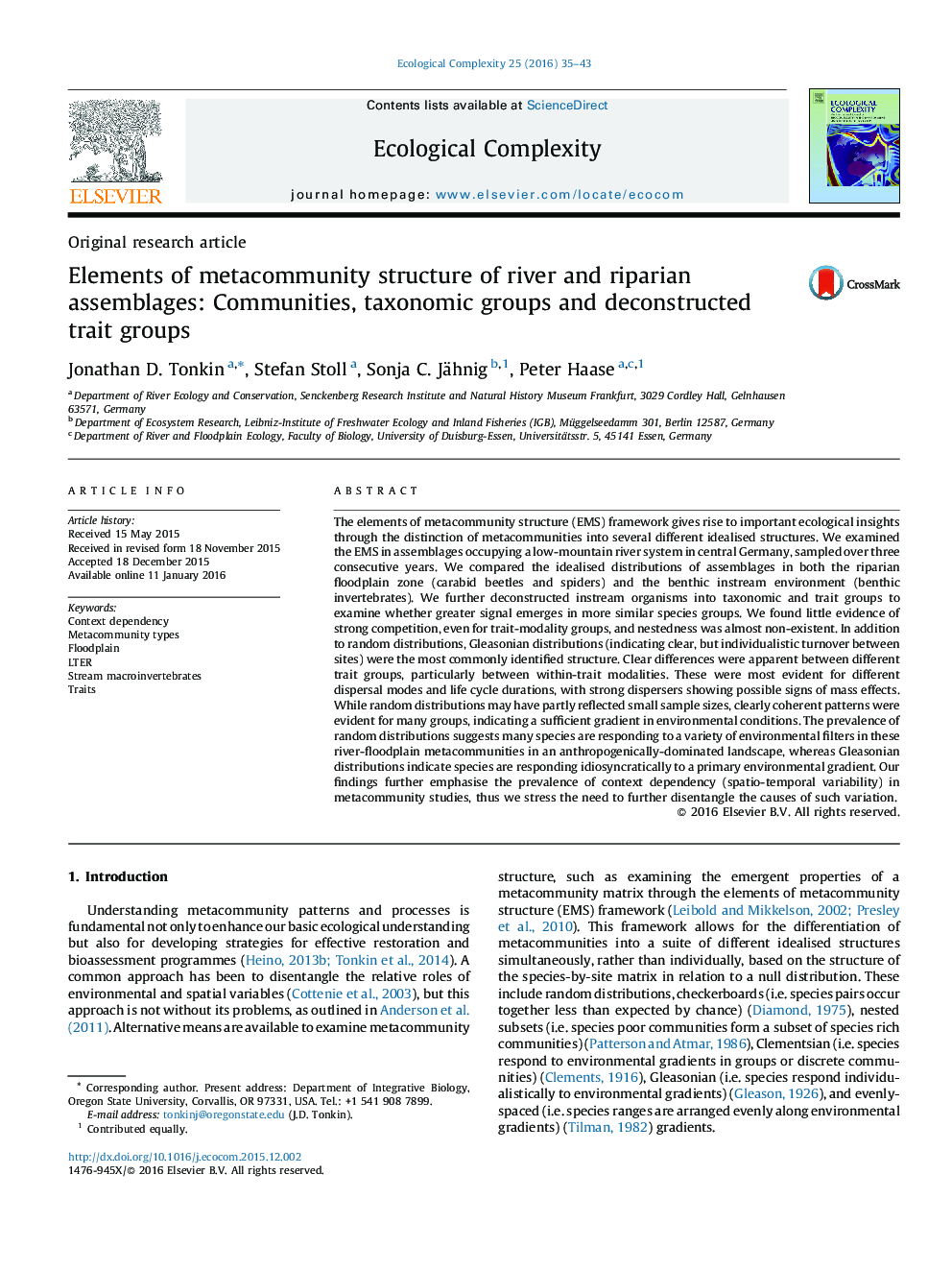| Article ID | Journal | Published Year | Pages | File Type |
|---|---|---|---|---|
| 4372391 | Ecological Complexity | 2016 | 9 Pages |
•Metacommunity types were highly variable between different taxonomic and trait groups.•Little difference was observed between full aquatic and riparian communities.•Random and Gleasonian distributions were the most common observed patterns.•Differences trait groups were clear, such as between strong and weak dispersers.•Trait-based approaches have clear benefits for studying metacommunity patterns.
The elements of metacommunity structure (EMS) framework gives rise to important ecological insights through the distinction of metacommunities into several different idealised structures. We examined the EMS in assemblages occupying a low-mountain river system in central Germany, sampled over three consecutive years. We compared the idealised distributions of assemblages in both the riparian floodplain zone (carabid beetles and spiders) and the benthic instream environment (benthic invertebrates). We further deconstructed instream organisms into taxonomic and trait groups to examine whether greater signal emerges in more similar species groups. We found little evidence of strong competition, even for trait-modality groups, and nestedness was almost non-existent. In addition to random distributions, Gleasonian distributions (indicating clear, but individualistic turnover between sites) were the most commonly identified structure. Clear differences were apparent between different trait groups, particularly between within-trait modalities. These were most evident for different dispersal modes and life cycle durations, with strong dispersers showing possible signs of mass effects. While random distributions may have partly reflected small sample sizes, clearly coherent patterns were evident for many groups, indicating a sufficient gradient in environmental conditions. The prevalence of random distributions suggests many species are responding to a variety of environmental filters in these river-floodplain metacommunities in an anthropogenically-dominated landscape, whereas Gleasonian distributions indicate species are responding idiosyncratically to a primary environmental gradient. Our findings further emphasise the prevalence of context dependency (spatio-temporal variability) in metacommunity studies, thus we stress the need to further disentangle the causes of such variation.
